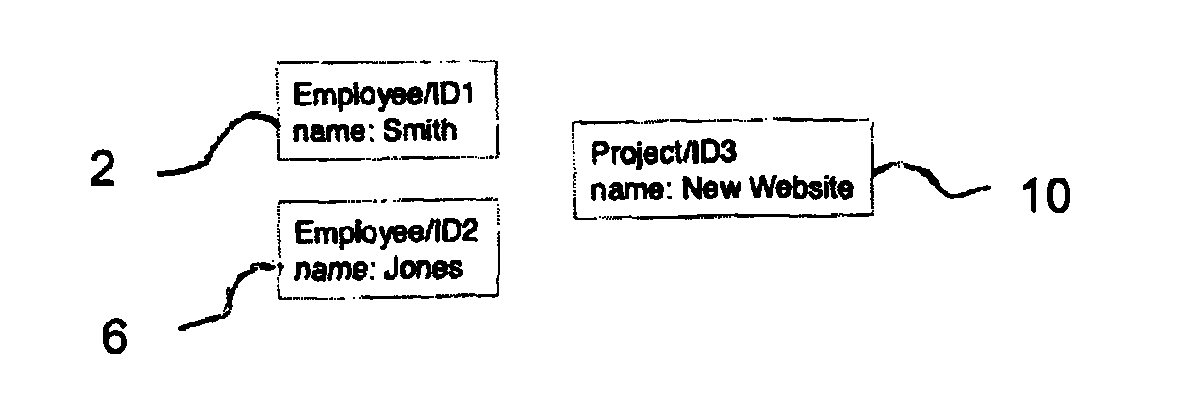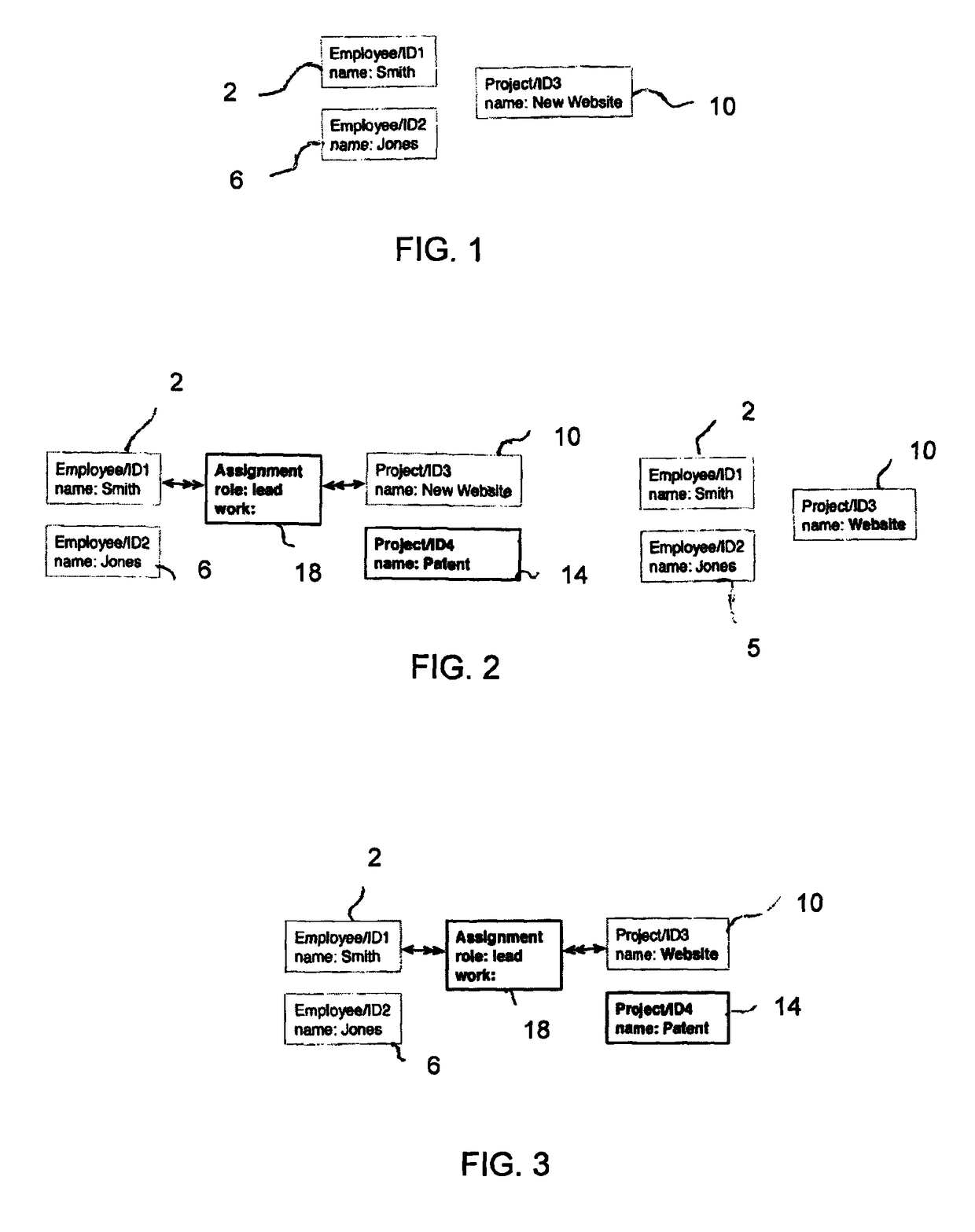Method and system for syncing data structures
a data structure and data technology, applied in the field of methods and systems for syncing data structures, can solve the problems of affecting the immediate effect of changes performed by one user, slow or unstable network environment of devices,
- Summary
- Abstract
- Description
- Claims
- Application Information
AI Technical Summary
Benefits of technology
Problems solved by technology
Method used
Image
Examples
Embodiment Construction
[0231]Referring to FIGS. 1 to 12, a preferred embodiment of the method according to the invention is discussed.
[0232]Two users, Alice and Bob, work collaboratively on a data structure which is represented as an object graph and which represents project management data of a company with several employees. Alice and Bob concurrently work on the object graph at their respective device, which can, for instance, be a personal computer, a tablet, or a smartphone. Alice and Bob respectively hold a local copy or representation of the object graph in the memory of their respective device. The changes or modifications on the object graph which Alice performs are transmitted to Bob via email. Similarly, changes or modifications which Bob performs are transmitted to Alice.
[0233]The object graph comprises and / or can be built of objects which have an object identifier and at least one property. They are designed according to a data model. Properties can be attributes or relationships.
[0234]In the...
PUM
 Login to View More
Login to View More Abstract
Description
Claims
Application Information
 Login to View More
Login to View More - R&D
- Intellectual Property
- Life Sciences
- Materials
- Tech Scout
- Unparalleled Data Quality
- Higher Quality Content
- 60% Fewer Hallucinations
Browse by: Latest US Patents, China's latest patents, Technical Efficacy Thesaurus, Application Domain, Technology Topic, Popular Technical Reports.
© 2025 PatSnap. All rights reserved.Legal|Privacy policy|Modern Slavery Act Transparency Statement|Sitemap|About US| Contact US: help@patsnap.com



